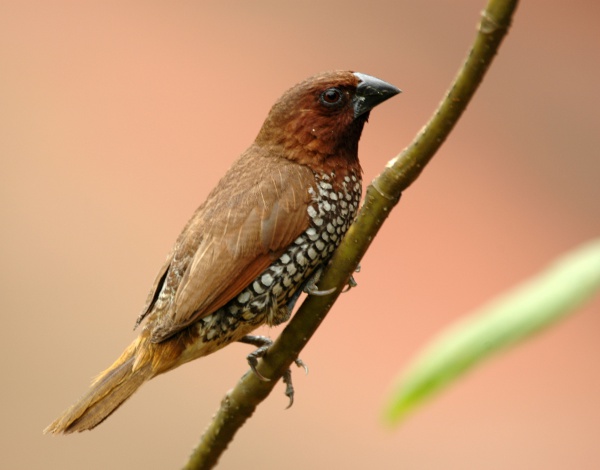Facts About Scaly-breasted munia
The scaly-breasted munia, also known as the spotted munia, nutmeg mannikin, or spice finch, is a small, sparrow-sized bird native to tropical Asia. First described by Carl Linnaeus in 1758, this bird belongs to the genus Lonchura and is easily identifiable by its distinctive scale-like feather patterns.
This social species thrives on a diet that includes grass seeds, berries, and insects. It communicates with other munias through soft calls and whistles. For nesting, the scaly-breasted munia constructs dome-shaped nests using materials like grass or bamboo leaves. These birds inhabit tropical plains and grasslands across Asia, with 11 different subspecies varying in size and color.
Interestingly, the scaly-breasted munia has been introduced to various parts of the world. Established feral populations can be found in places like Puerto Rico, Hispaniola, Australia, and the United States. Despite its expansive distribution, the species is listed as "Least Concern" by the IUCN due to its large and stable population.
These birds are highly social, often forming flocks and roosting with other munia species. They typically breed during the summer rainy season, with both parents sharing the task of incubating the eggs.
When feeding, scaly-breasted munias primarily consume grass seeds, berries, and insects. They have been the subject of numerous studies focused on their optimal foraging behavior, flock size dynamics, and specialized foraging tactics. Depending on group size and resource availability, the birds adapt their foraging strategies. Research indicates that within a group, individuals may specialize in different foraging roles, balancing between being producers or scroungers.
These birds are commonly found in habitats close to water and grasslands, with a particular fondness for paddy fields in India. When they escape captivity, they often establish themselves in new areas, leading to the formation of feral populations in various regions. While the scaly-breasted munia is considered an agricultural pest in some places, it is not globally threatened and continues to maintain a large, stable population.

 Myanmar (Burma)
Myanmar (Burma)